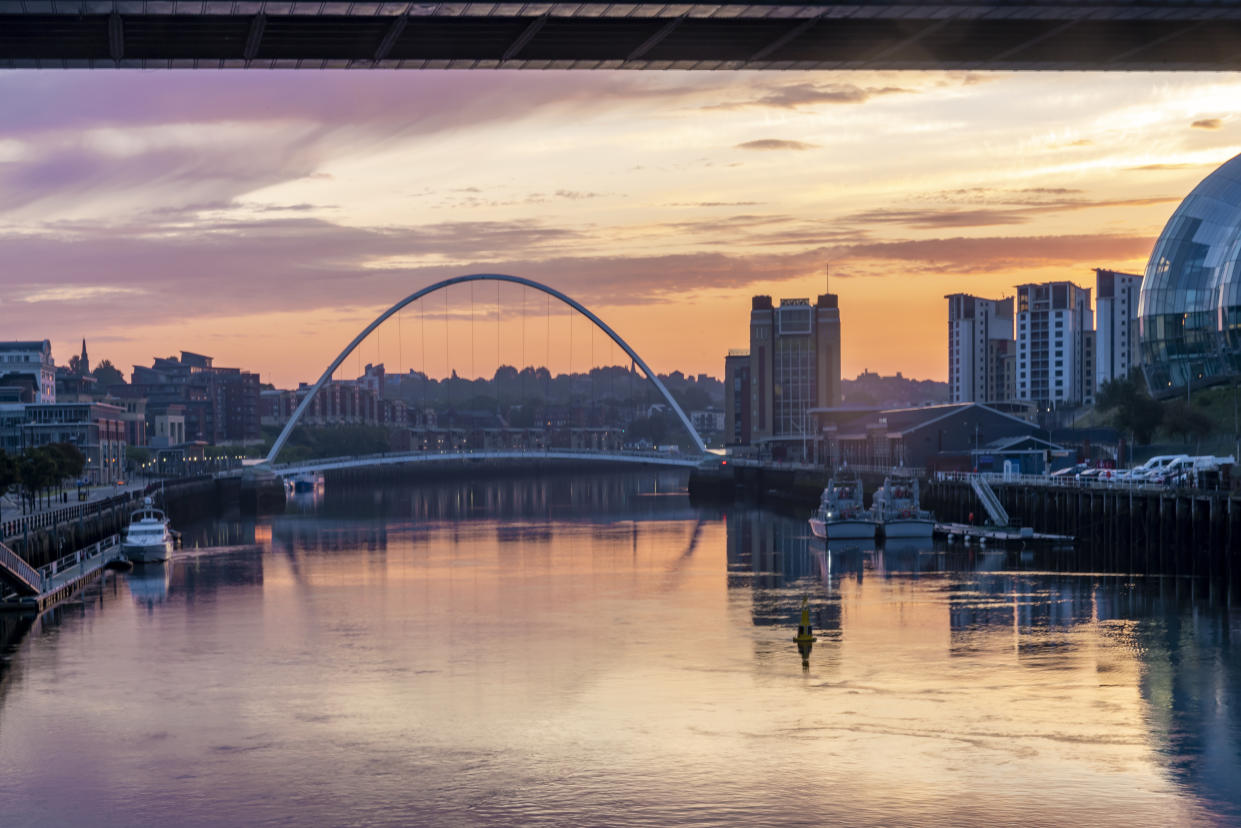The two regions where COVID cases are increasing ‘sharply'

Newcastle has been identified as the city with the highest rate of coronavirus infections in England, with cases in the north east and north west of England rising rapidly.
At the end of a week that saw more parts of both regions entering local lockdowns, the Office for National Statistics (ONS) revealed that infection rates there were still rising.
“Looking at trends over time, rates of COVID-19 have increased sharply in the North East and North West in recent weeks,” read the ONS website.
“Rates have also increased in London and Yorkshire and The Humber, and to a lesser extent the West Midlands.”
In its weekly update on COVID-19 figures the government confirmed that the city of Newcastle had the highest number of new infections.

It said: “Positivity by regions remains highest in the north. At a local authority level, incidence was highest in Newcastle upon Tyne.”
Newcastle, along with Northumberland, North and South Tyneside, Gateshead, Sunderland and County Durham, had lockdown restrictions tightened on Wednesday.
It had been illegal for two households to mix inside or in a garden, but it was only guidance that they should not meet at public venues, including restaurants and pubs.
Now, Matt Hancock has announced that the measures in the North East have been extended to Liverpool, Warrington, Hartlepool and Middlesbrough, and will come into effect at 00.01 on Saturday.
However, Middlesbrough’s mayor, Andy Preston, is leading a protest over new coronavirus restrictions.
The stance has led to fears that residents will fail to take seriously new measures imposed in the area.
Preston said he was prepared to defy the government and reject new COVID-19 measures imposed on the town.

The government’s strategy of local lockdowns to curb the virus has come under fire from many critics, including Keir Starmer.
During Prime Minister’s Questions (PMQs), the Labour leader questioned why only one area of England, Luton, has ever come out of local restrictions.
He also pushed Boris Johnson on what his plan for lifting restrictions was and criticised his “whack-a-mole” strategy.
Starmer said: “Over 16 million people, that’s about one in four, are now living under local restrictions.
Watch: Coronavirus in numbers
“In recent months, 48 areas in England have gone into local restrictions, but only one has ever come out and stayed out – that is Luton.”
In response, Johnson accused the opposition leader of “sniping from the sidelines”.
The ONS has said there is some “limited evidence” that the incidence rate “may be levelling off following steep increases during August and September”, but uncertainty around the figures means it is too early to say.
It comes as scientists advising the Government said the R value – the number of people an infected person will pass coronavirus on to – is between 1.3 and 1.6.
Last week, the Scientific Advisory Group for Emergencies (Sage) estimated the R was between 1.2 and 1.5.

Sage estimates the number of new infections is growing by between 5% and 9% every day.
In its report, the ONS said there is evidence of higher infection rates in the North West and North East, as well as Yorkshire and the Humber and London.
The figures do not include people staying in hospitals or care homes.
Katherine Kent, co-head of analysis for the COVID-19 Infection Survey, said: “While the evidence suggests that the increase in new cases may be levelling off after a sharp rise in August and September, it is too early to be certain at this stage.”
Over the last six weeks, the study has analysed almost 300,000 test swabs from randomly selected members of the public, whether they have symptoms or not.
Coronavirus: what happened today
Click here to sign up to the latest news, advice and information with our daily Catch-up newsletter



